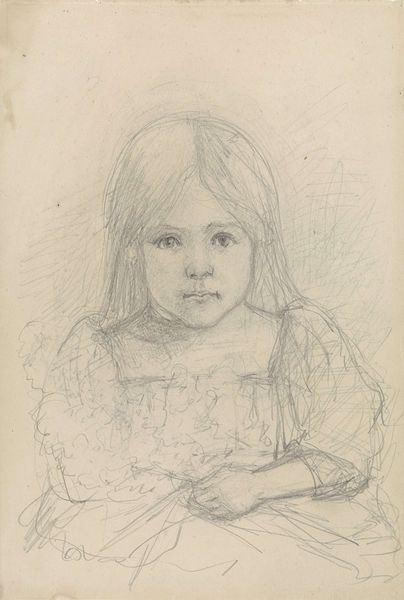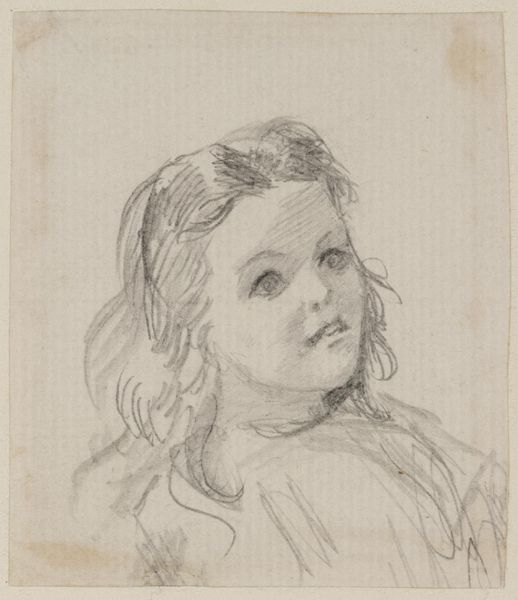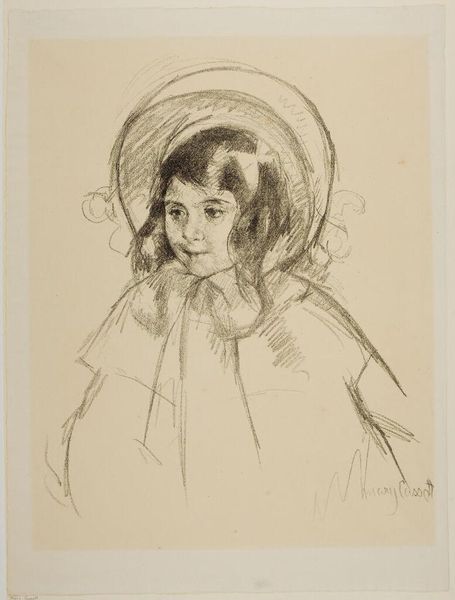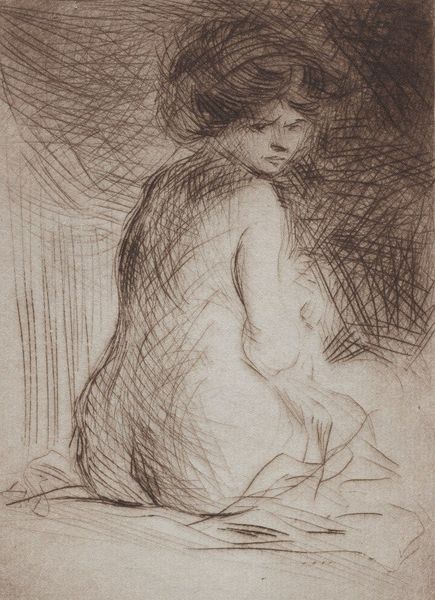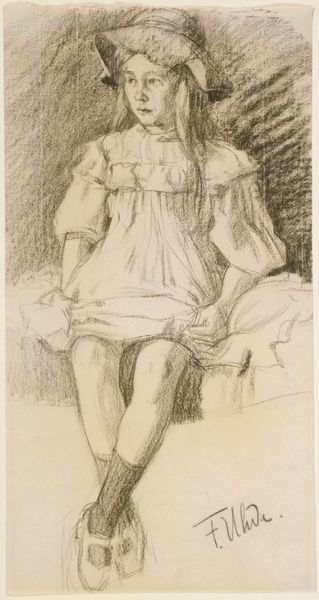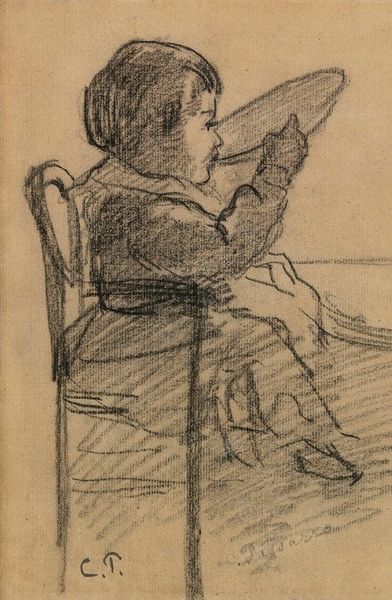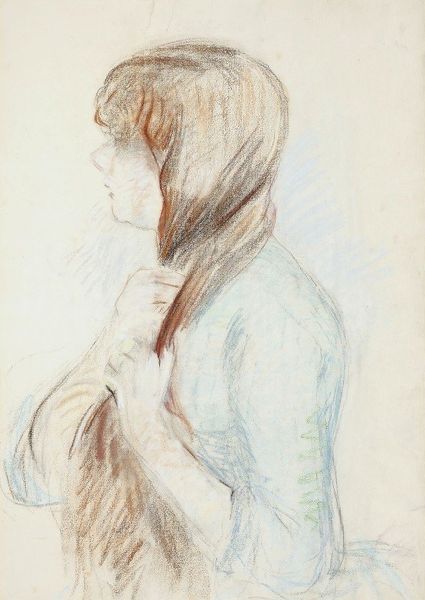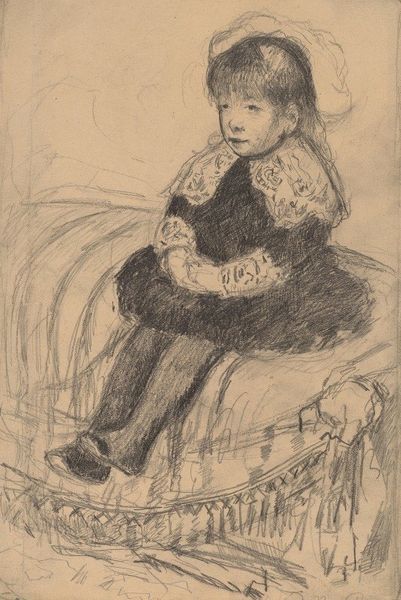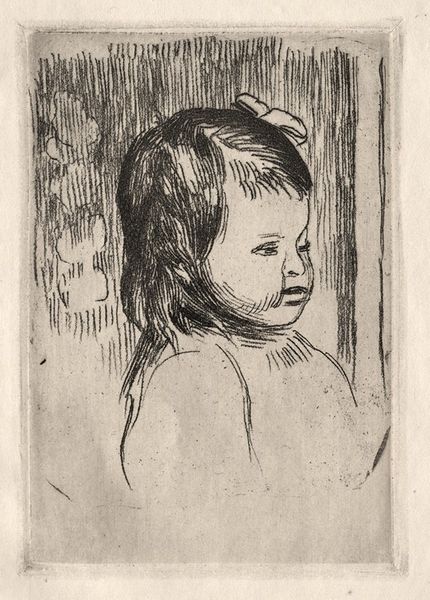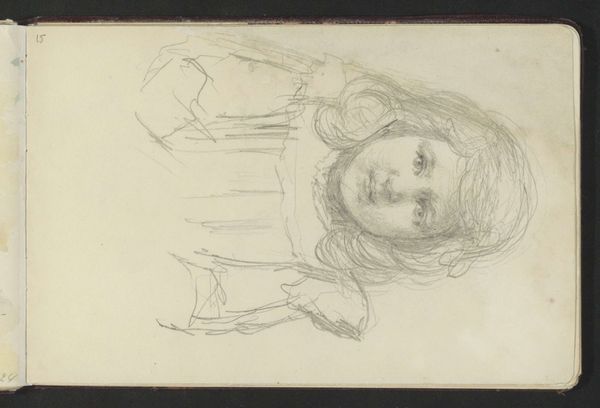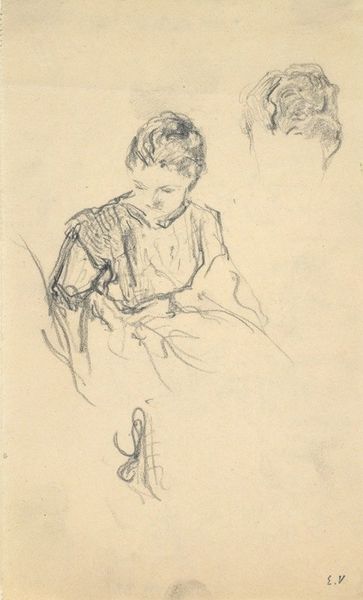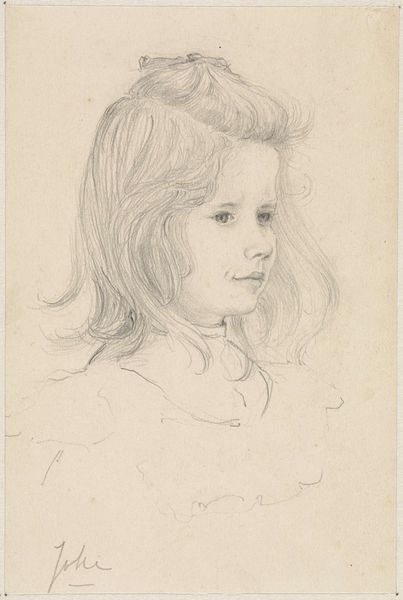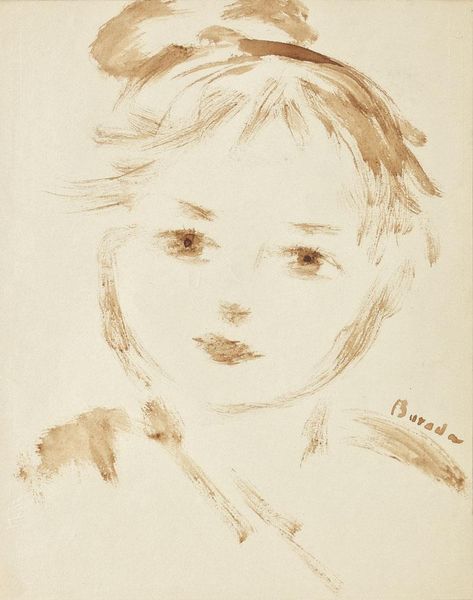
Copyright: Public Domain: Artvee
Editor: So, this is Mary Cassatt's "Margot, Resting Arms on Back of Armchair," circa 1903, made with pencil and colored pencil. The little girl seems so serious, lost in thought. It’s interesting how Cassatt captures this moment of quiet introspection with such simple means. What do you see in this portrait? Curator: The symbols here evoke the enduring spirit of childhood. Note how the girl’s pose—arms resting, gaze directed outwards—suggests both relaxation and anticipation. The armchair itself acts as a symbol. Can we interpret this interior as something like a domestic ‘throne’ or proscenium? It reminds us that, within a specific cultural milieu, even the young can possess a unique kind of authority. Editor: An interesting idea! Her clothes and surroundings do speak of a privileged upbringing, and you can almost see that sense of entitlement. Does the unfinished quality contribute to its meaning? Curator: Indeed. The visible pencil strokes suggest a fleeting moment, like a memory half-formed. And the overall lack of detail urges the viewer to imagine the sitter's broader context—her hopes, dreams, social roles. We also must not neglect the art historical context in order to evaluate cultural attitudes toward representing children, and girlhood. Editor: I see. So, it's not just about capturing her likeness, but about what she represents about youth and status within that era, preserved through artistic imagery? Curator: Precisely! Cassatt prompts us to contemplate childhood as a vital phase in the evolution of social structures and self-understanding, expressed through visual form and persistent memory. Editor: This has changed my perspective. I appreciate the symbolism within the work, representing lasting perceptions.
Comments
No comments
Be the first to comment and join the conversation on the ultimate creative platform.
